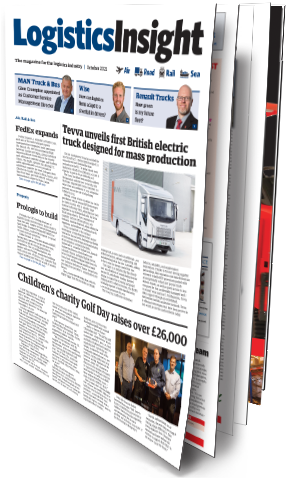 Welcome to the October issue of Logistics Insight magazine, a quarterly in-depth look at the logistics industry. In this issue we examine commercial vehicles, the air, rail and sea sector and the industrial property market.
Welcome to the October issue of Logistics Insight magazine, a quarterly in-depth look at the logistics industry. In this issue we examine commercial vehicles, the air, rail and sea sector and the industrial property market.
CLICK HERE TO LAUNCH THE DIGITAL EDITION OF LOGISTICS NEWS MAGAZINE
Electric truck pioneer Tevva has unveiled the new Tevva Truck – the first British designed 7.5- tonne electric truck intended for mass production in the UK. The global electric truck market was valued at $1.15 billion in 2020 and is expected to grow to $14.19 billion by 2027. The Tevva Truck has been unveiled to address the immediate industry need to electrify, with the United Kingdom and Europe committed to a target of net zero emissions by 2050 alongside a proposed ban on the sale of all polluting vehicles by 2035.
The haulage industry has had to face considerable challenges in recent years, including Brexit, Covid-19 and the ongoing pressure to become more environmentally friendly. More recently, the shortage of HGV drivers has hit the headlines, causing a scarcity of a wide range of products from fuel to groceries. Brexit has impacted the available pool of self-employed subcontractors while demand for deliveries has stayed strong, our commercial vehicles feature reports.
Around 95% of the nation’s trade enters or leaves the UK via the sea. Port operators represent some of the biggest investors in UK infrastructure in recent years, constantly increasing and upgrading to allow for growth and changes in trading trends. Air cargo accounts for 30% of global trade while the rail network is still essential for carrying goods all over the UK, says our air, rail and sea feature.
The trend for larger warehouse units has seen the average-sized unit increase from 217,000 sq ft in 2015 to 340,000 sq ft in 2020. A 2021 report by Savills commissioned by the UKWA reveals a 32% rise in the number of warehousing units and a 242% increase in units of more than 1m sq ft. Unlike in 2015 when high street retailers were the leading occupiers, that position is now held by 3PLs, with increased occupation levels of 42% and online retailers, who have increased warehouse occupancy by a staggering 614%, according to our property feature.
f The logistics industry has done an excellent job in keeping Britain supplied in spite of numerous trials. Enjoy reading the magazine.




Comments are closed.